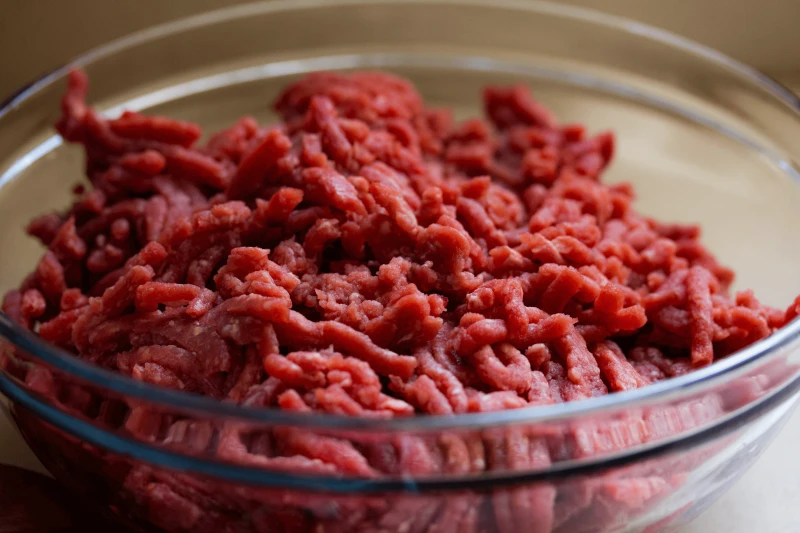Cell-based, lab grown meat is splitting food and agricultural sustainability communities. Here’s why
Cell-based, lab grown meat is splitting food and agricultural sustainability communities. Here’s why


Proponents of cultivated meat argue that it carries numerous environmental benefits compared to conventional agriculture — all of which are particularly relevant in the age of human-driven climate change. Companies can generate large amounts of meat with small cultures of cells, which could reduce the land and resources required to raise livestock. Potentially, according to Hudson Robotics, a half-gram of cow stem cells could produce 4.4 billion pounds of ground beef. The benefits of this could lead to other eco-friendly consequences, too — including lower demand for growing animal feed, reduced waste to manage, and less land to clear.
The livestock industry’s environmental footprint has only grown over the past few decades, and it’s estimated that the sector currently contributes somewhere between 11% and 19% of global greenhouse gas emissions, as per a report published by The Breakthrough Institute. And considering that worldwide demand for animal products is increasing, there is an imperative for scientists to find new ways to source protein without accelerating climate and land-use devastation.
The contemporary lab-grown meat industry isn’t exactly environmentally friendly. A preprint of research published by University of California, Davis revealed that in its current state, the environmental cost of producing cultured meat is higher than that of conventional meat. The report estimates that the global warming potential of lab-grown beef, calculated by measuring the carbon dioxide emissions per kilogram of meat produced, is between four and 25 times higher than traditionally sourced beef.
This is an excerpt. Read the original post here

 | Videos | More... |

Video: Nuclear energy will destroy us? Global warming is an existential threat? Chemicals are massacring bees? Donate to the Green Industrial Complex!
 | Bees & Pollinators | More... |

GLP podcast: Science journalism is a mess. Here’s how to fix it

Mosquito massacre: Can we safely tackle malaria with a CRISPR gene drive?

Are we facing an ‘Insect Apocalypse’ caused by ‘intensive, industrial’ farming and agricultural chemicals? The media say yes; Science says ‘no’
 | Infographics | More... |

Infographic: Global regulatory and health research agencies on whether glyphosate causes cancer
 | GMO FAQs | More... |

Why is there controversy over GMO foods but not GMO drugs?

How are GMOs labeled around the world?

How does genetic engineering differ from conventional breeding?
 | GLP Profiles | More... |

Alex Jones: Right-wing conspiracy theorist stokes fear of GMOs, pesticides to sell ‘health supplements’




 Viewpoint — Fact checking MAHA mythmakers: How wellness influencers and RFK, Jr. undermine American science and health
Viewpoint — Fact checking MAHA mythmakers: How wellness influencers and RFK, Jr. undermine American science and health Viewpoint: Video — Big Solar is gobbling up productive agricultural land and hurting farmers yet providing little energy or sustainabilty gains
Viewpoint: Video — Big Solar is gobbling up productive agricultural land and hurting farmers yet providing little energy or sustainabilty gains Fighting deforestation with CO2: Biotechnology breakthrough creates sustainable palm oil alternative for cosmetics
Fighting deforestation with CO2: Biotechnology breakthrough creates sustainable palm oil alternative for cosmetics Trust issues: What happens when therapists use ChatGPT?
Trust issues: What happens when therapists use ChatGPT? 30-year-old tomato line shows genetic resistance to devastating virus
30-year-old tomato line shows genetic resistance to devastating virus California, Washington, Oregon forge immunization alliance to safeguard vaccine access against federal undermining
California, Washington, Oregon forge immunization alliance to safeguard vaccine access against federal undermining The free-range chicken dilemma: Better for birds, but with substantial costs
The free-range chicken dilemma: Better for birds, but with substantial costs ‘You have to treat the brain first’: Rethinking chronic pain with Sanjay Gupta
‘You have to treat the brain first’: Rethinking chronic pain with Sanjay Gupta
